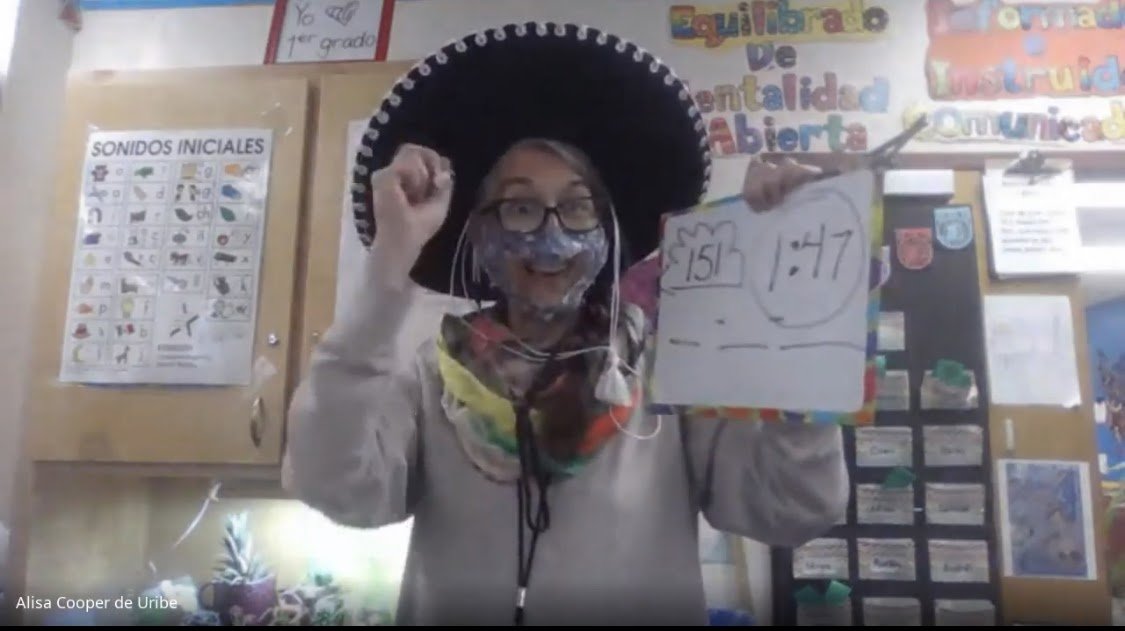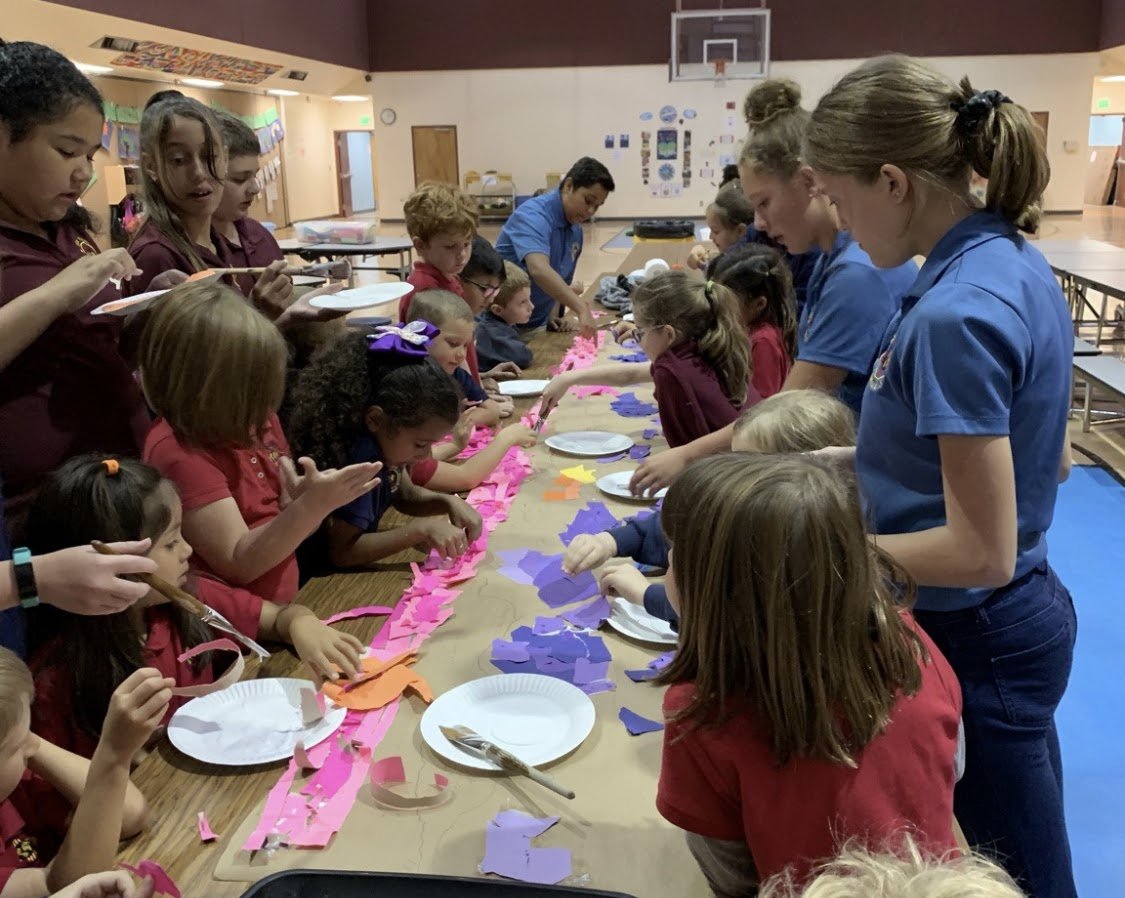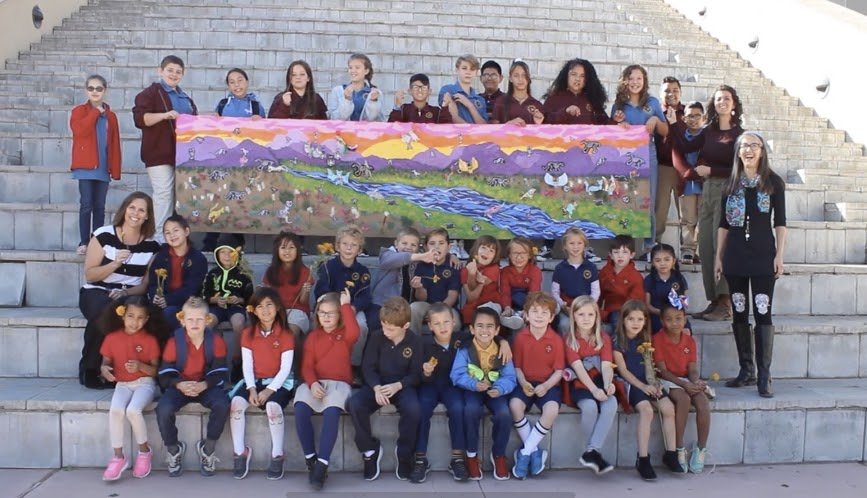Q: Tell us about your school.
A: I teach first grade at New Mexico International School , a public charter school located in Albuquerque. We aim to provide students from kindergarten through middle school with immersive opportunities for language acquisition, as well as transdisciplinary and inquiry-based learning experiences in the context of social and emotional development for achieving international-mindedness.
Our school currently serves about 240 students as we continue to grow. As a school of choice, our population includes students from across our metro area. Our focus on language immersion in Spanish and Arabic within the framework of the International Baccalaureate Primary Years Programme makes our curricula unique in how it weaves together content standards, skills and student identity.
Q: How has the pandemic affected your school in general and your own teaching in particular? What do you most look forward to in getting students back in the classroom full-time?
A: Language immersion depends highly on sustained interpersonal interaction and relationships, and the pandemic had a direct impact on our ability to provide that as our time together was limited and many of the spontaneous and tailored moments we usually share together were inhibited.
For our STEM-related learning in particular, teachers spent personal time and funds to prepare science kits for students to use at home for project-based learning. We often depend on parent volunteers and family contributions to make those learning experiences come together, so the necessary distancing measures placed a lot of this community-based work back onto the teachers.
However, it also gave a number of teachers the impetus needed to reach out to organizations such as the local Water Authority for materials and remote learning resources, and community ties were formed and reinforced that way.
My own teaching has benefitted from this work during a pandemic. Engaging young students with transdisciplinary learning in a second language is always a tall order, and remote learning necessitated an intense focus on maximizing time together while providing families and students with the context, information and materials needed to bring a new learning context to life.
I am especially grateful for the opportunity to have expanded ways to connect and develop relationships with students regardless of our locations.
Many of my students are now back in the classroom with me full-time, and, as I anticipated, I experience joy on a daily basis in hearing students use their newly learned academic vocabulary in a typically ebullient classroom environment.
The social interactions among peers and the way their learning plays off each other’s ideas and perspectives flows more easily without a screen. I am also delighted by how my online students remain an integral and important part of our blended classroom community.
Q: Could you recap some of the key points you made on a recent STEMx webinar about learning loss and the pandemic? How do you think education will change short- and long-term as a result of the pandemic?
A: One of the primary discoveries that I and my colleagues have made is that learning loss is something of a misnomer in relation to the pandemic, and the lived experience of many students and educators has been more of a learning shift.
Given the inequities related to educational access that became more apparent, such as internet access, adult supervision and overall support that varied among students’ situations, a focus on design process and connections among STEM applications surfaced more quickly than it likely would have if our context hadn’t changed so abruptly.
The flexibility of timing, materials and projects resulted in more student engagement, agency and reflection and greater overall ownership of learning.
In order to maintain these levels of learning, however, educators often dipped into their personal budgets to ensure students had access to materials, and while connections with some community organizations helped alleviate that to some extent, another point that is key in this conversation is the need for additional funding and more streamlined processes to utilize it.
Schools can find themselves using operational money to pay for STEM-related professional development needs that might have been unforeseen, and given the strictures of use for Title II funds, it can hinder access to training needed to provide our students with better, more relevant learning experiences.
I suspect that education in the short-term will see more changes that include access to internet services and technological devices. The need for innovative teachers and teachers of color is as urgent as ever, and my hope is that teacher preparation programs and incentives for professional development will experience an increase in both funding and visibility.
In the long-term, I imagine that education will continue to depend more heavily on technology even for our youngest learners, and the increased access to the products will likely also increase students’ involvement in technological development and innovation.
Flexibility in teaching modalities is also a long-term outcome that I anticipate resulting from this pandemic, though it should also be tied to increased recognition and remuneration of teachers for their expertise and broad variety of specialized skills.
Q: Your first-grade curriculum is taught mostly in Spanish. What are the benefits of this, and also of bringing the arts into the classroom?
A: There is an ever-increasing body of research that shows the long-term benefits of multilingualism, ranging from cognitive flexibility and creativity to life expectancy and overall health. In addition to the cognitive benefits of learning in more than one language, the experience of learning content in a space of some discomfort provides students with the opportunity to gain empathy and compassion for others, as well as an understanding that working together can often be more fruitful than trying to do everything by oneself.
As we have seen with the design process in our STEM learning this year, art is a part of each discipline. From scientific sketches to engineering designs to musical annotation, art is often a common through line, and teaching it as an integral part of the curriculum increases artistic sensibility while fostering feelings of success in students whose primary strengths are artistic.
Q: Tell us about the International Baccalaureate Primary Years Programme that you helped to develop at your school. What does it consist of, and why is it important?
A: The International Baccalaureate Primary Years Programme offers an interconnected set of guidelines for developing a living curricula. It also provides the entire school community with a lens through which members can view and explore the world.
Our Programme of Inquiry consists of a vertically-aligned sequence of learning based on six universal transdisciplinary themes that each student in grades K-5 explores from a different angle each year. These themes are Who We Are, Where We Are in Place and Time, How We Organize Ourselves, How We Express Ourselves, How the World Works and Sharing the Planet.
Each theme is taught through a central idea and various lines of inquiry, which combine content standards from all subject areas in authentic explorations of ideas, information and skill development. I see how important it is through the holistic academic and social development of my students.
Outside of the classroom, there are few – if any – hard lines that separate what we think of as subjects, human traits and goals for progress. Teaching these things in an interconnected way prepares students to be members of society who can be at once knowledgeable inquirers and caring communicators.
Q: Are there STEM-based aspects to your school’s overall curriculum and your first-grade curriculum? If so, what are they, and why do you think they are important? Do you think emphasis on learning a second language has STEM connections?
A: STEM is infused in some way in each of our transdisciplinary unit themes at every grade level. The standards that we work with are connected to our units’ central ideas, and though some units lend themselves more easily to STEM-based lines of inquiry, we strive each year to make our units increasingly more inclusive of as many STEM-related concepts as possible.
For example, our unit theme of Who We Are blends biology and anatomy in an exploration of health science with an introduction into engineering and architectural ideas through dream home design.
I believe that it is important to have STEM as an integral part of any curriculum instead of subjects taught discreetly, because as we have seen in real-time evolution of STEM in contemporary society, they are inextricably linked to nearly everything else in our daily lives.
We see STEM connections with language learning from the most basic cognates in academic terminology to the most international opportunities for collaboration. A number of our older students participate in the Model UN program, and their language learning in English, Spanish and Arabic expands their perspectives on cultural connections as well as solution-based teamwork skills to meet human needs such as access to clean water and the development of renewable energy infrastructure.
Q: Finally, can you share any insights you have gleaned so far from being named Teacher of the Year?
A: Being named Teacher of the Year has connected me with educators from across the country, and having a glimpse into their professional and personal worlds has shown me how fundamentally important it is for teachers to examine each other’s wealth of wisdom, expertise and perspectives.
Our country and its territories span a vast geographic area, and there is a beautifully symbiotic relationship between physical geography, cultural diversity and world views. While it can certainly highlight some of the significant differences in approaches to learning, it is a deeply enriching experience to establish connections with fellow educators of all disciplines.
Networking with other educational professionals in a structured but flexible cohort is a transformative experience that I think all educators should have access to at some point, and both the public and private sectors can organize, fund and facilitate these opportunities for teachers, to the benefit of society as a whole.




Comments are closed.